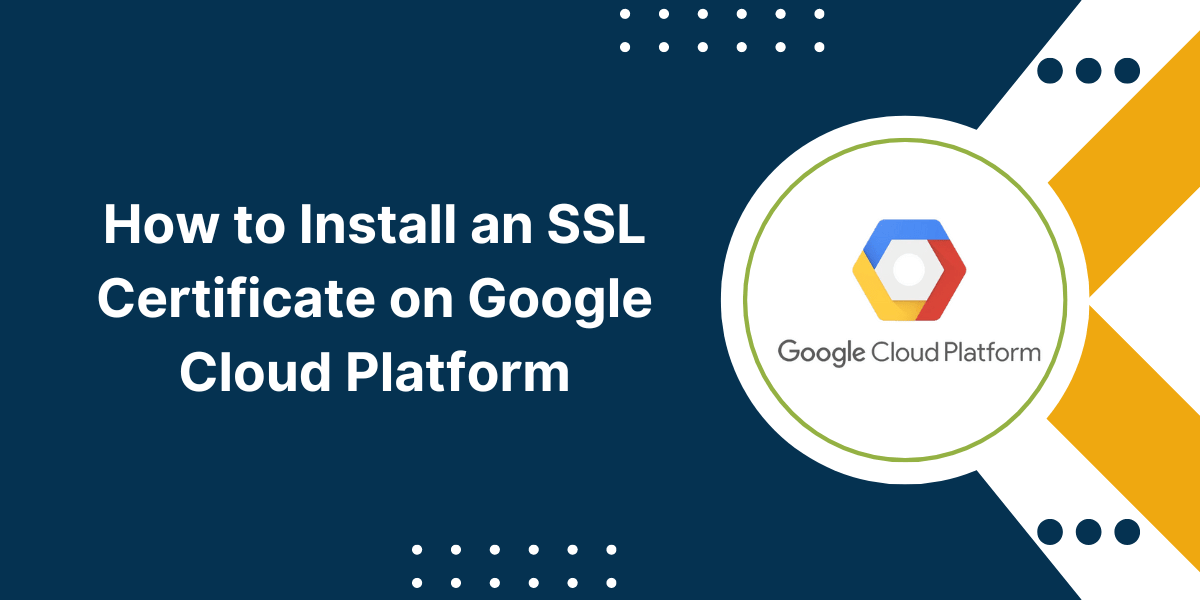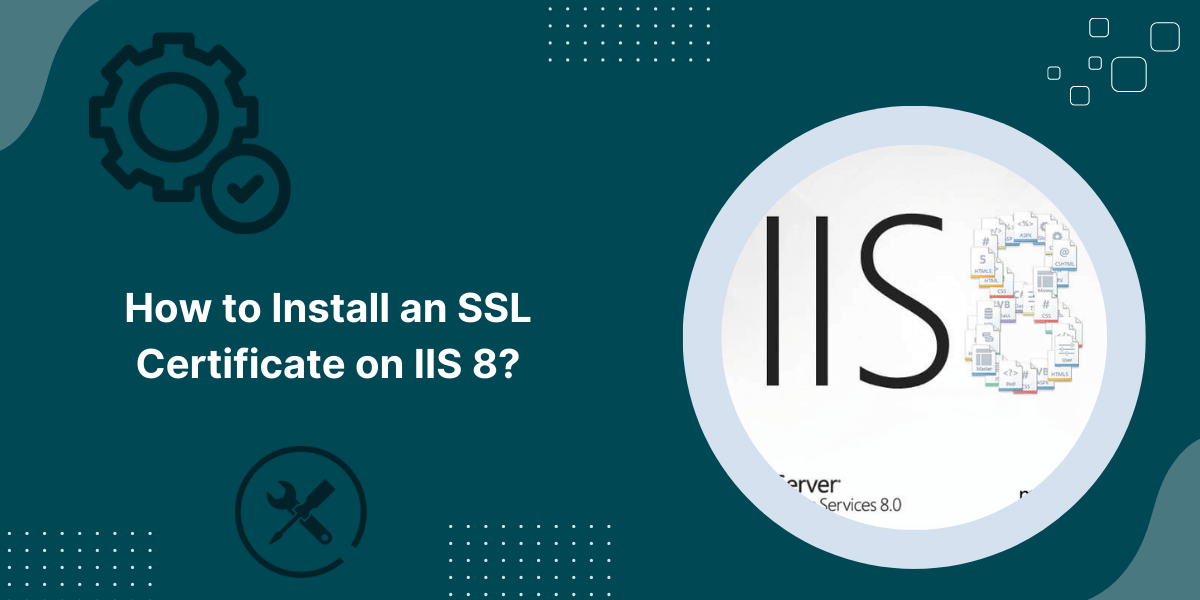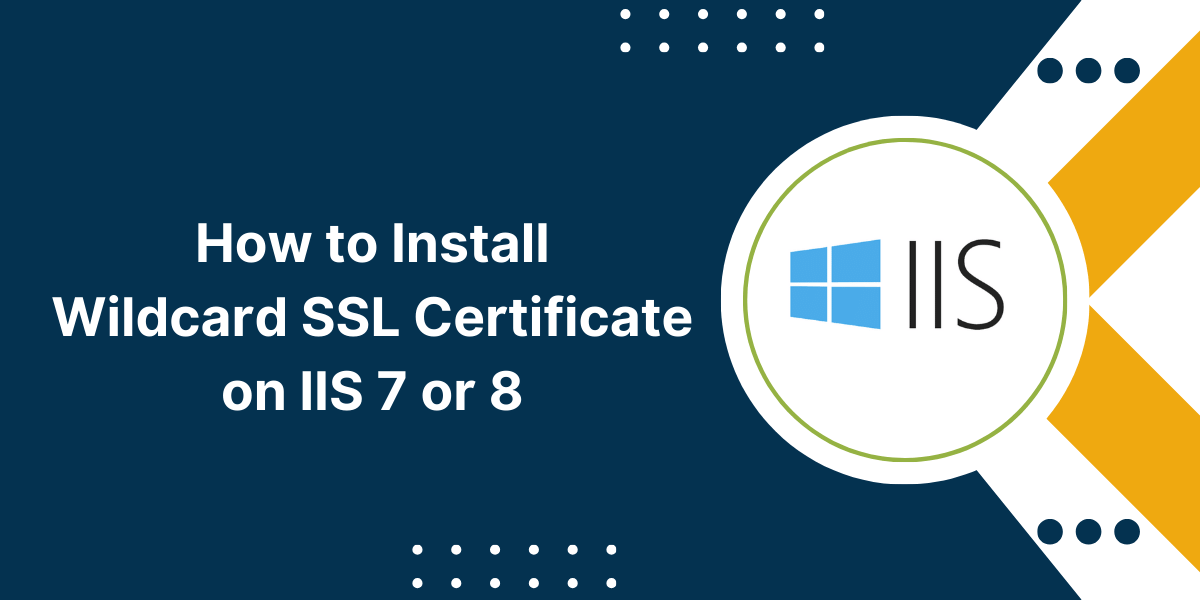Setup SSL Certificate for Website on Google Cloud Platform
Securing your website with an SSL certificate is one of the most important things you can do to protect your data and establish trust with your users. SSL certificates encrypt the data transmitted between a browser and server, preventing cybercriminals from accessing sensitive information.
When hosted on Google Cloud Platform (GCP), your website gets the performance, scalability, and reliability of Google’s infrastructure. Combining this with an SSL certificate gives you the best of both worlds – Google’s powerful platform and robust security for your site.
In this comprehensive guide, we’ll walk through the entire process of installing an SSL certificate on Google Cloud step-by-step.
Why Do You Need an SSL Certificate on Google Cloud Platform?
Here are some key reasons why an SSL certificate is essential for websites hosted on GCP:
- Data Security: SSL encryption prevents hackers from accessing or modifying data during transmission. All communication between the browser and server is secured.
- User Trust: The padlock and HTTPS url indicate the site is secure and users can submit data safely. This increases user confidence and trust.
- SEO Rankings: Google favors websites with SSL installed, providing a boost in search engine results pages (SERP).
- PCI Compliance: Websites processing credit card data must be PCI-DSS compliant. SSL certificates are a requirement for this.
- Industry Standards: SSL is expected across most industries like banking, healthcare, ecommerce, and others handling sensitive data.
- Browser Warnings: Sites without SSL will generate browser warnings or be inaccessible. Google Chrome flags these as “not secure”.
Clearly, SSL certificates provide tremendous value and security for websites on GCP. Properly installing a certificate removes warnings, boosts SEO, and helps meet compliance mandates.
Prerequisites before Installing SSL Certificate on Google Cloud Platform
Before starting the installation process, make sure you have the following ready:
- Registered Domain: You need a domain name registered and hosted on Google Cloud to install the SSL certificate for.
- Certificate Files: Obtain the SSL certificate for your domain from a trusted certificate authority (CA). The CA will provide certificate files after purchase.
- Private Key: The CA will also provide the private key file needed to install the certificate.
- Google Cloud Account: You need an active Google Cloud Platform account and be logged into the console to access settings.
- Cloud DNS Configuration: The domain name must be configured and pointing to your load balancer on GCP.
Once you have these prerequisites in place, you can move to the next step of generating a Certificate Signing Request.
Generating a Certificate Signing Request
A Certificate Signing Request (CSR) is an encoded file that provides your information to the Certificate Authority (CA) during the purchase process. It contains details like organization name, location, domain name and key type that the CA uses to verify identity and ownership.
There are two options for generating a CSR on Google Cloud:
Using Google Cloud CSR Generator
Google Cloud provides a built-in CSR generator that allows you to create a CSR directly within the console. Here are the steps:
- In the GCP console, go to the SSL certificates page under Network services > Load balancing.
- Click on ‘Generate Certificate Signing Request’.
- Enter your domain name and organization details like country, state, city etc.
- Select the key type as RSA or Elliptic Curve. RSA is the most commonly option used.
- Specify the key length as 2048, 4096 or 8192 bits. Higher bits enhance security but 2048 is standard.
- Add any additional domain names or subdomains needed.
- Click ‘Generate’ to create the CSR.
Once generated, copy the CSR contents, and provide it to the CA when purchasing your certificate.
- Install OpenSSL on your computer if you don’t already have it. It comes pre-installed on most Linux and Mac machines.
- Open the command terminal and navigate to the folder where you want to store the CSR and private key.
- Run the command:
openssl req -new -newkey rsa:2048 -nodes -keyout yourdomain.key -out yourdomain.csr
- Enter the requested domain, organization and geographical information. Leave the challenge password blank.
- Your CSR file yourdomain.csr and private key file yourdomain.key will be generated in the current folder.
- Copy the contents of the CSR file and provide it to the CA. Keep the private key file safely stored.
Both options allow you to quickly create a CSR for purchasing and installing SSL certificates. The Google Cloud generator makes it easy by handling it directly in the console.
Purchasing Your SSL Certificate
Once you have a CSR, it can be submitted to a trusted CA to purchase the right SSL certificate for your site. There are a few things to consider when selecting your certificate:
- Validation Level: Domain validated (DV) only verifies domain ownership. Organization validated (OV) and extended validation (EV) also validate business identity. EV gives the green bar and maximum trust.
- Number of Domains: Single domain certificates only secure the main domain. Wildcard certificates cover the main domain and unlimited subdomains. Multi-domain or UCC certificates can protect multiple domains and SANs.
- Compatibility: The certificate should be compatible across all major browsers and devices like Apache, IIS, Tomcat, NGINX, mobile platforms etc.
- Budget: Prices range from around $10/year for basic domain validated certificates to $150+/year for extended validation. High-end certificates provide maximum trust and reassurance.
Once you decide on the right certificate type, complete the purchase process on the CA website by providing your CSR and some organization details for verification. The CA will then generate the SSL certificate tailored to your domains and deliver the files.
Receiving SSL Certificate Files
After completing the purchase, you will receive your SSL certificate files from the CA via email. This typically contains:
- Certificate File: This is the file with the .crt extension and contains your certificate issued by the CA.
- Intermediate Certificates: These are chained certificates that link your certificate to the root certificate. They have the .ca-bundle extension and establish trust.
- Private Key: The private key file you generated earlier with the .key extension that is required to install the certificate.
- Root Certificate: The root certificate may be provided in some cases. It’s already pre-installed in web browsers and establishes ultimate trust.
You will need the certificate file and intermediate certificates for installation on Google Cloud. Keep the private key safe and do not share it publicly. You are now ready to move to the final step of installing the SSL certificate.
Steps to Install SSL Certificate on Google Cloud Platform
Google Cloud makes it easy to install your SSL certificate with just a few steps in the console. Here is the complete process:
- Log into your Google Cloud Platform account and go to the App Engine
- Click on Settings and navigate to the SSL certificates
- Click on ‘Create Certificate’ to add a new SSL certificate.
- In the Create SSL Certificate dialog, provide a name for your certificate.
- For ‘Certificate type’, choose ‘Upload certificate’.
- Upload your certificate file (with .crt extension) and intermediate certificate bundle (with .ca-bundle extension). You can also paste the contents.
- Upload or paste your private key associated with the certificate.
- Click ‘Create’ and your SSL certificate will be installed.
A simpler option is to combine your domain certificate and intermediate certificates into one file. Then you can directly upload this combined file without needing to paste contents separately.
To enable the certificate, go to ‘Settings’ > ‘Custom domains’ and add your domain. Under the ‘SSL’ column, switch it to your newly added certificate. That’s it! Your website hosted on Google Cloud now has SSL installed and activated.
Testing SSL Certificate Installation
It’s important to test that your SSL certificate is properly installed and configured. Here are two common ways to validate and troubleshoot:
Use an SSL Test Tool
There are various online tools that perform deep scans of your certificate and server to identify issues. Some popular options include:
- Qualys SSL Test: Provides an A+ to F grading on certificate, protocol support, key strength etc.
- DigiCert Server Test: Checks for configuration problems and scans for vulnerabilities.
- SSL Insights SSL Checker: Quick test that gives details on trust, expiration, protocols, and more.
Use OpenSSL to Test
OpenSSL is a popular command line tool that can also be used to verify SSL installation.
To test using OpenSSL:
- Access your site via HTTPS using a browser like Chrome or Firefox. This ensures the certificate is active.
- Open a command prompt and enter:
openssl s_client -connect yourdomain.com:443
- Review the output for any errors. You should see the certificate chain details including your domain, issuer CA, and trust path.
- Look for a Verify return code: X509_V_OK at the bottom. This confirms successful validation.
Both options for testing will inspect all elements of your certificate and confirm it is properly issued, trusted, and error-free. This protects against potential vulnerabilities due to misconfigurations.
Now that your certificate is tested and verified, it will securely encrypt all communications to your site hosted on Google Cloud.
Renewing and Managing Certificates on Google Cloud
Like other infrastructure, SSL certificates also require ongoing management: especially when nearing expiration. Here are some tips for managing your Google Cloud certificates:
- Check Expiration Dates: Don’t let certificates lapse unknowingly. Monitor expiry to renew on time.
- Renew Early: Renewals take time for processing and propagation. Initiate renewal at least a month before expiration.
- Automate Renewals: Many CAs support auto-renewal to handle it seamlessly without lapses in security.
- Revoke if Compromised: If your private key is compromised, immediately request revocation and install a new certificate.
- Maintain Keys Properly: Private keys should be safely backed up and stored off the server. Restrict access only to site admins.
- Monitor for Warnings: Watch for browser errors or warnings which could indicate problems with the certificate.
Properly maintaining and renewing certificates ensures your website remains 100% secured at all times.
Troubleshooting Common SSL Certificate Issues
Despite your best efforts, you may still encounter some common problems with SSL certificates on Google Cloud. Here are troubleshooting tips for some frequent issues:
Browser Shows Site as Not Secure
This typically means your certificate is not installed properly or not activated. Double check that it is associated with your custom domain in the “SSL Certificates” section of Google Cloud.
SSL Certificate Expired Error
Your certificate has lapsed beyond the validity period. Renew the certificate immediately to restore security. A renewal only requires re-uploading the new certificate file in the console.
Domain Name Mismatch Warning
This error indicates your certificate does not match the domain name it is installed on. Ensure you are using a certificate issued specifically for your domain.
Chain Issues or Untrusted Certificate Error
This points to a problem with the certificate chain. It could be missing an intermediate certificate during installation. Upload the full chain bundle while installing to fix it.
Following these troubleshooting tips will help identify and fix the majority of common SSL certificate issues on Google Cloud.
Choosing the Right SSL Certificate Provider
The CA you choose for purchasing your SSL certificate plays a major role in the overall process.
Here are some factors to evaluate:
- Trust: The CA should be well-recognized and trusted by all major browsers and devices. This ensures universal acceptance.
- Support: Knowledgeable customer support is vital in case any issues arise during purchase or installation.
- Warranty: $250,000 warranty provides risk protection if the CA mistakes compromise your security.
- User Experience: Smooth order process, fast issuance, self-service management tools.
- Pricing: Balance cost savings with the level of security, features, and support needed for your site.
By carefully choosing an established SSL provider that meets your specific needs, you benefit from a smoother experience and maximum peace of mind.
Conclusion on Install SSL Certificate on Google Cloud Platform
Installing an SSL certificate on Google Cloud Platform enables you to leverage Google’s powerful infrastructure while securing your site and users. This guide covers the end-to-end process starting with generating a CSR, purchasing the right certificate, installing it properly on Google Cloud, and finally testing and verifying deployment.
Maintaining the certificate, troubleshooting issues, and selecting the ideal SSL provider are also key factors that ensure your website remains 100% secured at all times.
With Google Cloud’s user-friendly console and following these steps, you can have a trusted SSL certificate up and running on your website quickly and seamlessly. Your users will enjoy peace of mind knowing their data is fully protected by robust encryption when visiting your site.
FAQs on Install SSL Certificate on Google Cloud Platform
Can I use third-party SSL certificates on Google Cloud?
Yes, you can absolutely use SSL certificates from any trusted external provider. The only requirement is that the certificate matches the domain you are securing.
Is there a limit on the number of SSL certificates on Google Cloud?
Google Cloud allows you to upload up to 10 SSL certificates per project. You can request this limit if you need more certificates.
How do I renew SSL certificates on Google Cloud?
Renewing a certificate on Google Cloud simply requires re-uploading the new certificate file obtained from your CA before the old one expires. The process is quick and seamless.
Can I automate the renewal of Google Cloud SSL certificates?
Many top certificate authorities like Comodo, DigiCert, GeoTrust etc. provide auto-renewal options. This automatically renews and provisions new certificates before expiry.
How can I delete or remove an SSL certificate on Google Cloud?
In the ‘SSL certificates’ page under Load balancing, use the menu to select a certificate and click ‘Delete’. Confirm deletion and the certificate will be permanently removed.



